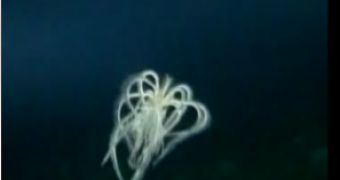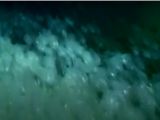We are looking for new worlds on other planets, and we don't even know the worlds hosted by our own. A large array of giant mysterious creatures have been found by a recent two-month expedition in the freezing waters of Antarctica, including huge sea spiders and worms. The new specimens have been found inhabiting the Antarctic sea bed at depths of up to 6,500 ft (2,000 m). Gigantism is a common phenomenon for many abyssal animals (giant squids up to 12 m (40 ft) long are just one example).
"Gigantism is very common in Antarctic waters. We have collected huge worms, giant crustaceans, and sea spiders the size of dinner plates," said Martin Riddle, the Australian Antarctic Division scientist who led this international census of the Antarctic marine life.
The samples are already being identified and DNA is investigated in many university centers worldwide.
"Not all of the creatures that we found could be identified and it is very likely that some new species will be recorded as a result of these voyages," said Graham Hosie, head of the Collaborative East Antarctic Marine Census.
The larger project is mapping fauna and flora in the Antarctic's Southern Ocean for assessing the impact of climate change on the Antarctic marine environment. 3 ships were involved in the recent expedition: Aurora Australis (Australia), L'Astrolabe (France), and Umitaka Maru (Japan).
The work is part of an even larger project to map the biodiversity of the world's oceans. The French and Japanese ships investigated the mid- and upper-level environment, while Aurora Australis checked deeper waters with remote-controlled cameras.
"In some places every inch of the sea floor is covered in life. In other places we can see deep scars and gouges where icebergs scour the sea floor as they pass by. Among the bizarre-looking creatures the scientists spotted were tunicates, plankton-eating animals that resemble slender glass structures up to a yard tall standing in fields like poppies," said Riddle.
"They were all bottom dwellers so they were all evolved in different ways to live down on the seabed in the dark. So many of them had very large eyes-very strange-looking fish," added Riddle.
Another expedition, 10 to 15 years from now, will assess how climate changes will have affected these ecosystems.

 14 DAY TRIAL //
14 DAY TRIAL // 
